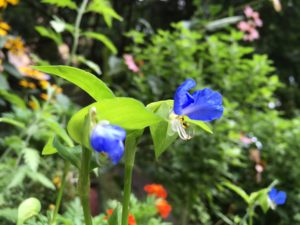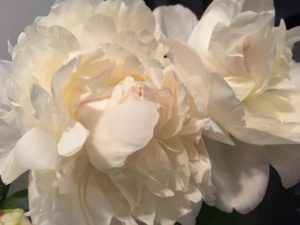高山青, 澗水藍
阿里山的姑娘美如水呀
阿里山的少年壯如山. . .
High mountains green, ravine streams blue.
Alishan’s girls are as beautiful as the water,
Alishan’s young men are strong as the mountains. . ..
高山青 is one of the most popular songs in Taiwan. Originally from a movie soundtrack, it describes the scenery of Ali mountain and the loveliness of the indigenous people. It has been arranged/orchestrated by various composers and covered by almost every pop star. I often performed an indigenous style dance based on this famous tune. In my young mind, I was always curious of how green the mountains were, and how blue the water.
When I learned that we would travel down south to visit the mountain, I was excited but didn’t know what to expect. I knew that we would be away for several days. Mom asked the neighbors to keep an eye on our pets.
Our first stop was in the city of Chiayi 嘉義, a long train ride from Taipei. Mom had lived in the city for a period of time in her youth. It might have been a special visit for mom. However, not used to long rides, I was too tired to enjoy the people, the food and any other special things the city had to offer. I was glad to finally arrive at the hotel.
As we settled in and unpacked, I heard little chirping sounds. Following the sound source, I saw a wall gecko. It wasn’t alone. As it slipped away, its companions continued to sound their alarms. Growing up in a house semi-open to the surroundings, we were familiar with wall geckos. But, we never heard them making any sounds. Mom explained to us that geckos in northern Taiwan were mute but the ones in the south all chirped. (It is commonly believed that Zhuoshui River 濁水溪 is the dividing line.)
I found the gecko calls interesting. In a way, they made it easy to spot those little creatures on the walls. The only thing was that, after we turned off the lights, they were still chirping—not exactly the kind of lullaby that I needed, sleeping on a strange bed.
The next day, we took a special train up to the mountain. The locomotive was red—just like the ones in storybooks. Unlike the express train we took the day before, this one moved calmly. We saw forests and mountains out from the windows. After a while, the train started going in and out of tunnels. . . long tunnels. Then, it began zigzagging! Mom said that the climb was too steep, so the train would have to go backwards before moving up again. For us, the backward movements were more exciting than the normal upward climb. Gradually, we felt the coolness of the mountain air. Mom pulled out sweaters for us.
When we arrived at our destination, there were souvenir vendors and hotel clerks crowded around the gate. We followed one of them to a hotel. I have no recollections of any special meals. But I remember being told that we needed to go to bed early for the packed agenda next day: We were to get up in the dark; hike up to a perfect spot to view the sunrise and the mountain clouds. Then, we were going to see the three-thousand-year-old sacred tree 神木.
We managed to get to the overlook before sunrise. The weather, however, wasn’t cooperating. The sun never broke out of the clouds. Yet, we were on the mountain top looking down at a sea of clouds, which seemed so immense and motionless.
The sacred tree, a giant red cypress, was so tall that we could hardly see its top. It probably would take thirty people to wrap around its trunk. But, damaged by a thunderstroke, its center was hollow. I wondered, if a tree could think and speak, what it might say to me, a tiny kid. Was it hard to have lived for such a long time?
Our hotel clerks and tour guides were all indigenous people (Tsou tribe). They all had stark facial features and were hardworking. As beautiful as the mountain scenery was, I didn’t envy them living up there, isolated and with limited supplies.
Based on what I read online, Alishan Railway had gone through lots of challenges: Newly built highway reduced its ridership. Natural disasters caused multiple damages and interrupted services. Nonetheless, it is making its comeback.
Cultivation of high-mountain tea has generated revenue for locals. Yet, growing environmental concerns brought interruptions to further developments. With the entire region designated as a National Scenic Area, man-made features gradually erode natural beauty.
I was glad to have visited the mountains when it was not easily accessible.
Learn more about Alishan Railway:
Alishan Forest Railway – Wikipedia
Enjoy hiking: Two-day Hiking Tour
Celebrating the railway and the cherry blossom season, Google created a regional doodle: Alishan Forest Railway Doodles


